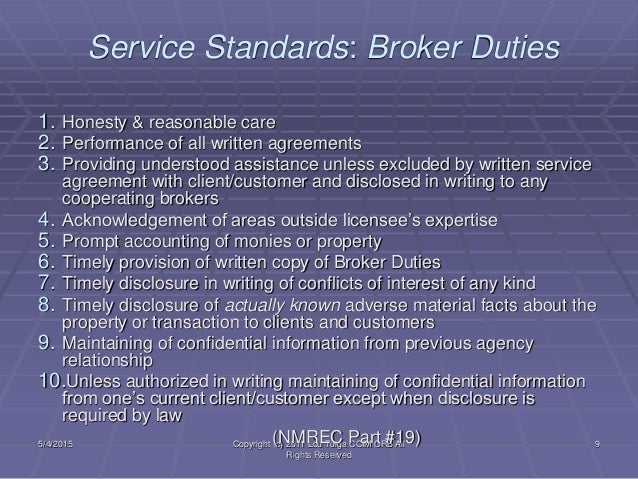

The TRANSACTION BROKER, however, has changed its complexity and, essentially, its basic meaning.
Duties of transaction broker full#
Today, we still have a single agency relationship with full fiduciary duties, which allows a broker to represent either a buyer or seller, but not both at the same time. Agency laws changed to be more practical while at the same time ensuring the public’s protection. Certainly, a conflict of interest existed. These laws became very confusing, causing brokers to have a difficult time acting as a dual agent. Brokers were allowed to represent sellers as a single agent, buyers as a single agent, or represent both in a =DUAL AGENCY= capacity which allowed the broker to represent both the seller and the buyer at the same time with full fiduciary capacities. The original agency laws created in the state of Florida brought forward several concepts. Florida prohibits dual agency because it is impossible for a real estate broker to act in the best interests of both a seller and buyer at the same time. In dual agency relationships, the Realtor acts as the seller and buyer's agent. In the mid-1980s, buyers became aware of their right to have representation if they wanted it. Buyers, at that time, were not being represented. This cooperation between brokers basically created an automatic sub-agency with each other, meaning that all the brokers were working for their sellers. In fact, the Multiple Listing Service (MLS) got its start originally by brokers cooperating to sell each other’s listings. Prior to agency laws, it was assumed that all real estate licensees automatically worked for sellers by virtue of the listing contract. Over the years, the relationship between real estate licensees, sellers, and buyers has undergone many changes. Historical Perspective of Agency Relationships



 0 kommentar(er)
0 kommentar(er)
